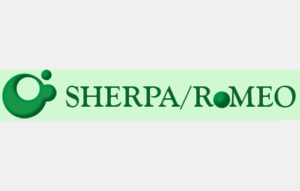Nutrient Composition, Carcass and Organ Characteristics of Broiler Chickens Fed Diets Supplemented with Some Medicinal Composite Plant Leaves
Two experiments were conducted to determine the nutrient composition, carcass and organ characteristics of broiler chickens fed diets supplemented with some medicinal composite plant leaves. The medicinal plant leaves used for the experiment were Neem leaf meal (NLM), Pawpaw leaf meal (PLM), Scent leaf meal (SLM) and Bitter leaf meal (BLM). The birds were assigned to 6 treatment diets supplemented with the leaf meals and prepared as follows; T1 (0g/kg NLM+PLM+SLM+BLM), T2 (2.50g/kg NLM+PLM+SLM+BLM), T3 (5.00g/kg NLM+PLM+SLM+BLM), T4 (7.50g/kg NLM+PLM+SLM+BLM), T5 (10.00g/kg NLM+PLM+SLM+BLM) and T6 (12.50g/kg NLM+PLM+SLM+BLM) in a completely Randomized Design. Data collected were subjected to Analysis of Variance. Results of proximate, energy and phytochemical composition of experimental diet containing medicinal plant composite leaf meals revealed that the DM content of the treatments ranged from 91.23% – 91.37%, ash, 4.27% – 4.29%; CP, 21.60% – 22.25%; EE, 3.40% – 3.49%; CF, 4.13% – 4.96%; NFE, 57.03% – 57.95% and ME, 2880.07kcal/kg – 2903.82kcal/kg. Ash content also decreases with increase in inclusion levels. With T1 having the highest ash content (4.29%) and T6, the lowest (4.25). The result of proximate and energy composition of experimental diets fed broiler chickens with medicinal plant leaf extracts revealed the DM content of the diet ranged from 91.28% in T6 – 91.40% in T1 and T3, respectively. The ash content of the diets ranged from 4.22% in T6 – 4.30% in T1, T2 and T5, respectively. The CP of the diets was 21.60% and the EE ranged from 3.39% in T4 – 3.41% in T1 and T3. The CF was between 4.13% – 4.15%. The NFE ranged from 57.93% in T2 – 57.96% in T1 while the ME was between 2897.59kcal/kg – 2899.52kcal/kg. The proximate and energy composition of test ingredients revealed that the crude protein content of neem leaf (11.20%) was higher when compared to the protein contents of other test ingredients. The crude fibre of the four investigated leaves ranged from 8.26% in neem leaf – 8.98% in bitter leaf. The ether extract ranged from 0.09% in scent leaf-0.15% in pawpaw leaf, NFE ranged from 53.89% in bitter leaf-56.70% in pawpaw leaf and scent leaf, respectively. The ME ranged from 2101.81kcal/kg in bitter leaf-2319.65% in neem leaf. Bitter leaf contained higher ash content (15.11%), followed by neem leaf (12.31%) when compared to pawpaw leaf (10.65%) and scent leaf (9.81%). Addition of composite leaf meal in the broiler diet does not have any negative effects on the carcass characteristics of the broiler chicken as there were no significant effect of the leaf meal on carcass parameters. The medicinal plant extracts have a significance difference (P<0.05) on shank, breast and back cut of the birds. No significant difference (P>0.05) were seen in the organ proportions of the birds administered the plant extracts except the kidney which was larger in birds fed T1 and T2 but statistically similar to birds fed T3, T4 and T5.
Keywords: Carcass, Organ, Broiler Chickens, Fed Diets, Medicinal, Plant Leaves




















